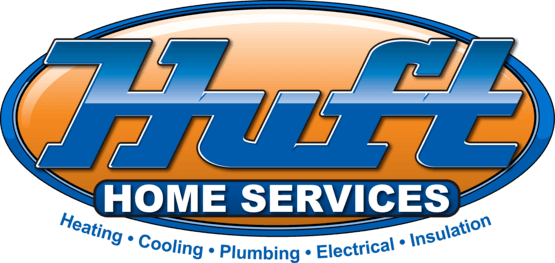As you spend more time indoors during the worst of the year’s temperature extremes, it can have you thinking about the quality of air inside your home. This holds especially true for those who suffer from severe allergies, asthma, or other respiratory conditions. We’re going to do a deep dive into assessing indoor air quality and how it has an effect on your home and your health.
What Is Indoor Air Quality?
Indoor air quality (IAQ) refers to the air quality within and around buildings and structures, especially as it relates to the health and comfort of occupants. Poor IAQ occurs when indoor air contains high concentrations of pollutants, allergens, and other harmful substances. Conversely, good IAQ means minimal airborne contaminants and a comfortable, well-ventilated environment. Maintaining good IAQ should be a priority to ensure a healthy living space year-round.
How Does Poor Indoor Air Quality Affect Your Health and Overall Well-Being?
When the air quality level inside your home is poor, it can negatively affect your overall health and well-being. High levels of indoor pollutants can lead to a variety of health issues like eye, nose, and throat irritation. You may experience excessive fatigue, headaches, and dizziness. According to the EPA, long-term exposure to indoor air pollutants has been linked to respiratory illnesses, and some studies suggest potential associations with cardiovascular disease and cancer.
Those who already suffer from a health condition are likely to experience an aggravation of their symptoms. This can mean more allergy flare-ups and more frequent asthma attacks. It can be helpful to take note of when you’re experiencing these symptoms. If they seem to worsen at home but improve when you leave, poor indoor air quality is likely the culprit.
Most Common Indoor Air Contaminants
There are many different pollutants that can find their way inside your home and contaminate your air. One of the most common during the winter months is combustion byproducts, like carbon monoxide and particulate matter. These byproducts are the result of burning things like firewood, gas stoves, or candles. However, carbon monoxide leaks can occur year-round from appliances like furnaces and water heaters.
Biological agents like mold and mildew are another common type of pollutant that can be very aggravating for respiratory conditions. VOCs (volatile organic compounds) are released through certain cleaning products, furniture, paint, air fresheners, and carpets. Older homes may also contain harmful substances like lead, asbestos, and pesticides. Other examples include radon and pet dander.
It’s important to realize that indoor air pollutants can be the result of activities you’re doing indoors, or they can come from activities outdoors. Any open windows, doors, or cracks can allow outdoor contaminants to enter your home.
Signs You Have Poor Indoor Air Quality
There are many different signs that can indicate poor indoor air quality in your home. One of the most obvious is experiencing worsening allergy or asthma symptoms when at home. You may also notice persistent coughing, sinus congestion, dry mucous membranes, and itchy or irritated eyes.
Inside your home, frequent dust accumulation despite regular cleaning, as well as visible mold or mildew growth, can also signal poor IAQ. If multiple signs appear together, it’s likely time to take steps to improve the air quality in your home.
Getting a Professional Air Assessment
One of the best places to start improving the quality of air inside your home is to get a professional air assessment. This is where one of our HVAC technicians will come into your home and evaluate the different concentrations of known airborne contaminants.
This will give you a detailed report of the various contaminants that are in high concentrations in your home so that you can work to address those specifically. It also provides a great starting point so that when you make changes to enhance your air quality, you can verify their effectiveness with follow-up testing.
Enhancing Indoor Air Quality
There are many different ways to enhance the quality of air inside your home. One of the simplest things you can do is to invest in an air filter for your HVAC system with a high MERV rating. Opt for purchasing a filter rated between MERV 13 and 16 if your system is equipped for that rating. These filters provide superior filtration while maintaining efficient HVAC operation. Be sure to check with a professional to ensure your system is compatible with higher-rated filters.
Another option is to go with a UV sanitizing light. Instead of trapping airborne contaminants like traditional filters, UV germicidal lighting disrupts the DNA of bacteria, viruses, and other pathogens so that they can’t reproduce. While UV lights are excellent for reducing biological contaminants, they are not effective against VOCs, dust, or pet dander. For best results, they should be used in combination with high-quality air filtration.
Humidity and Indoor Air Quality
We can’t talk about indoor air quality without bringing up the topic of humidity. When humidity levels are above or below the optimal 30% to 50% range, they can have a detrimental effect on the air quality inside your home. High humidity (above 50%) creates an ideal environment for mold and mildew growth, both of which are known allergens that can trigger respiratory symptoms.
On the other hand, low humidity can dry out the mucus membranes in your respiratory system, making it easier for viruses and bacteria to enter your body and cause infections. One of the best ways to maintain proper humidity levels is by investing in a whole-home humidifier or dehumidifier. These systems automatically adjust moisture levels in your home for optimal comfort and health.
Reliable Indoor Air Quality Service
Huff Home Services offers reliable indoor air quality service to the Sacramento, CA area. We can also help with all your heating, air conditioning, and air sealing needs. Proper air sealing reduces the entry of outdoor pollutants and enhances energy efficiency. Simply call our office today to book your next service appointment or ask about our Protection Plan!



